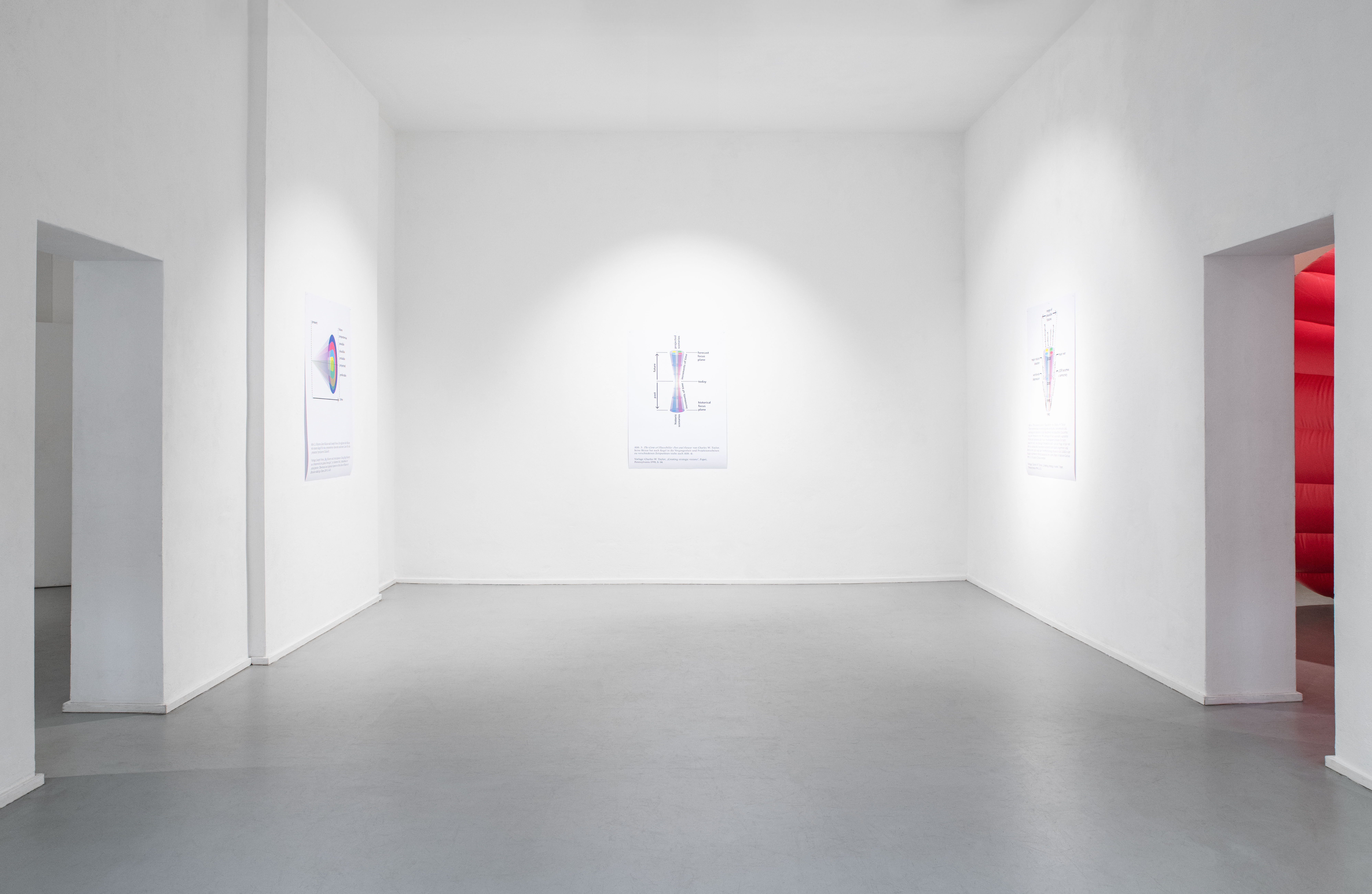
When it comes to speculation in art in general and design in particular, there is one sketch that is repeatedly used as an illustration. The illustration is called Futures Cone and has been circulating for decades in different variations among futurists, foresight experts, artists and designers. It always consists of differently colored cones whose nested funnels open into the future. The various adaptations and the context in which they were created refer to different aims of speculation and different ideas of the present and the future.
Fußnoten zur Zukunft is an experimental essay exhibition that associatively traces the stories associated with the history of the Futures Cone, reads them as artifacts and makes them accessible in a sensory and physical directory of sources. It is based on the text "Die Ambiguität der Spekulation. Futures Cone-Skizzen und ihre Kontexte" from the publication Specology. Zu einer ästhetischen Forschung, published by Hamburg-based Adocs-Verlag in 2023. This text is made accessible via a flyer that can be unfolded into both a poster and a mini-publication.
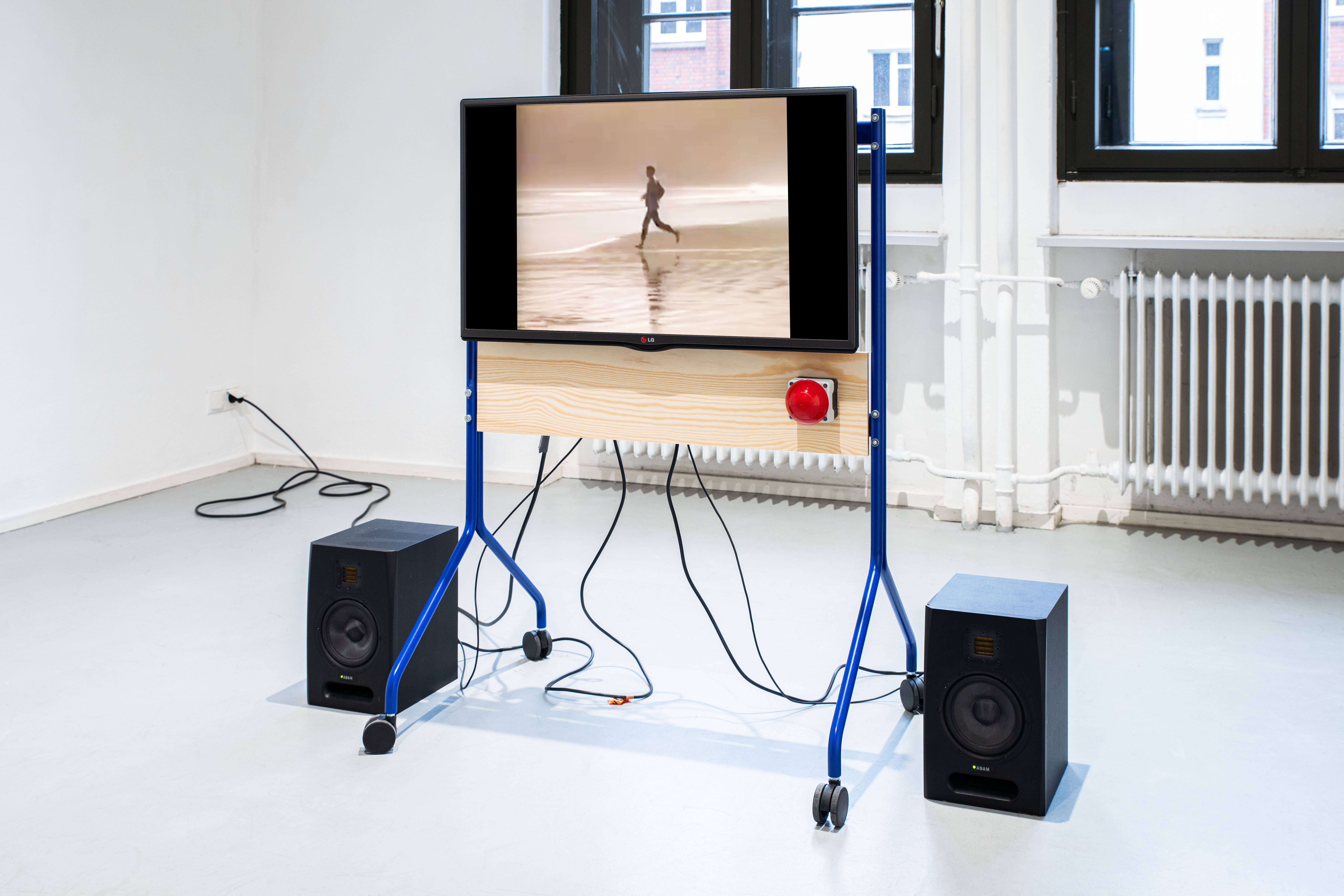

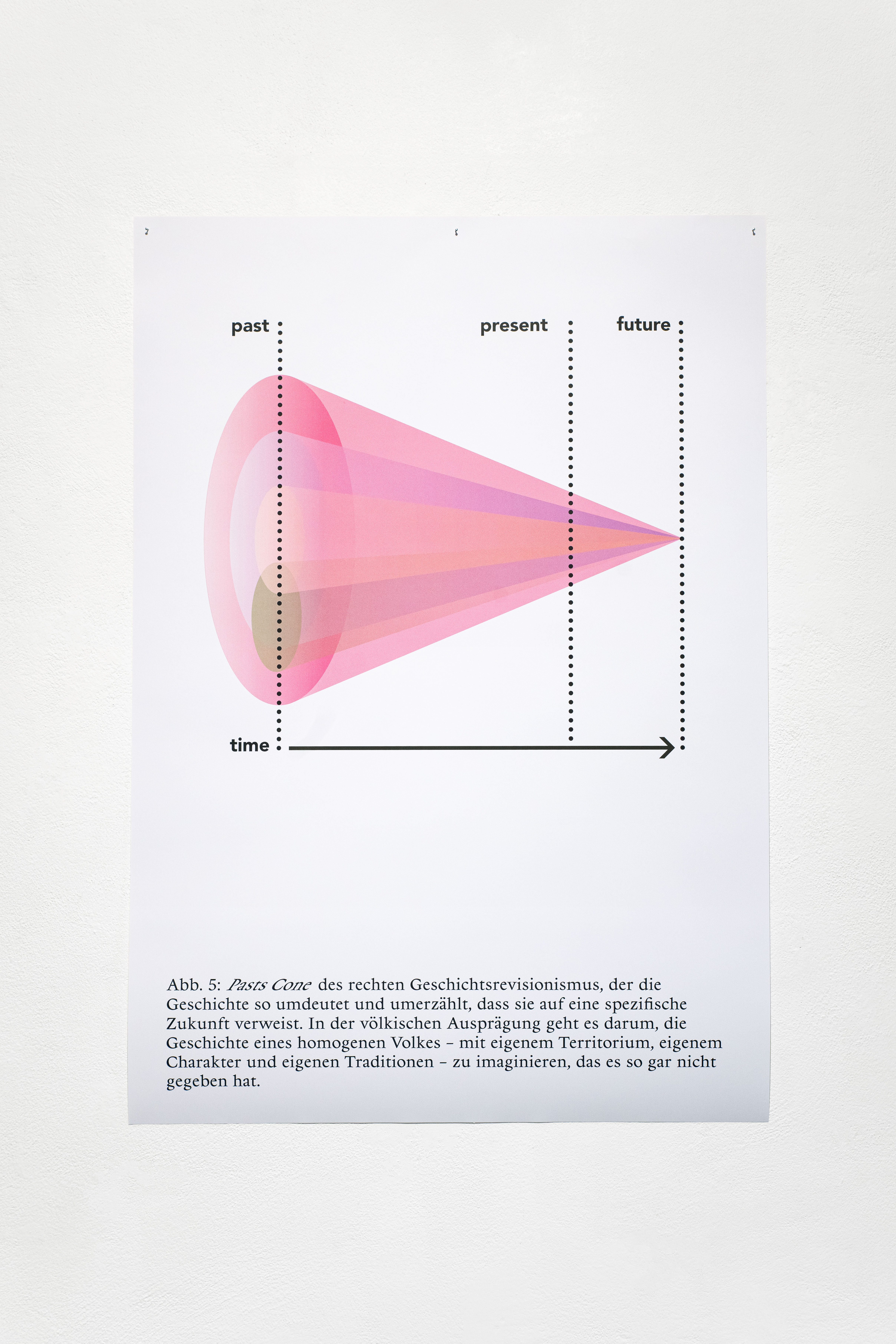
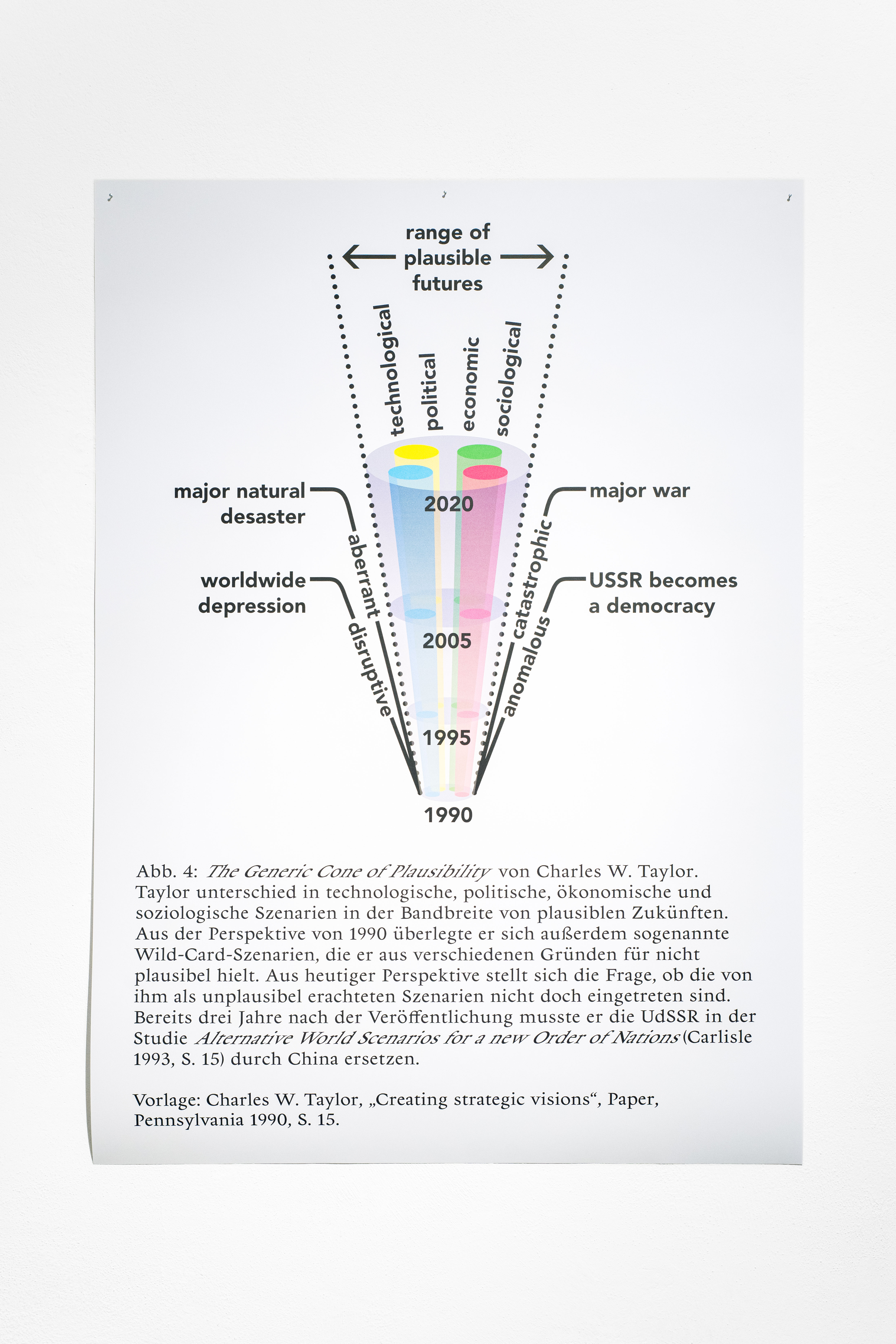
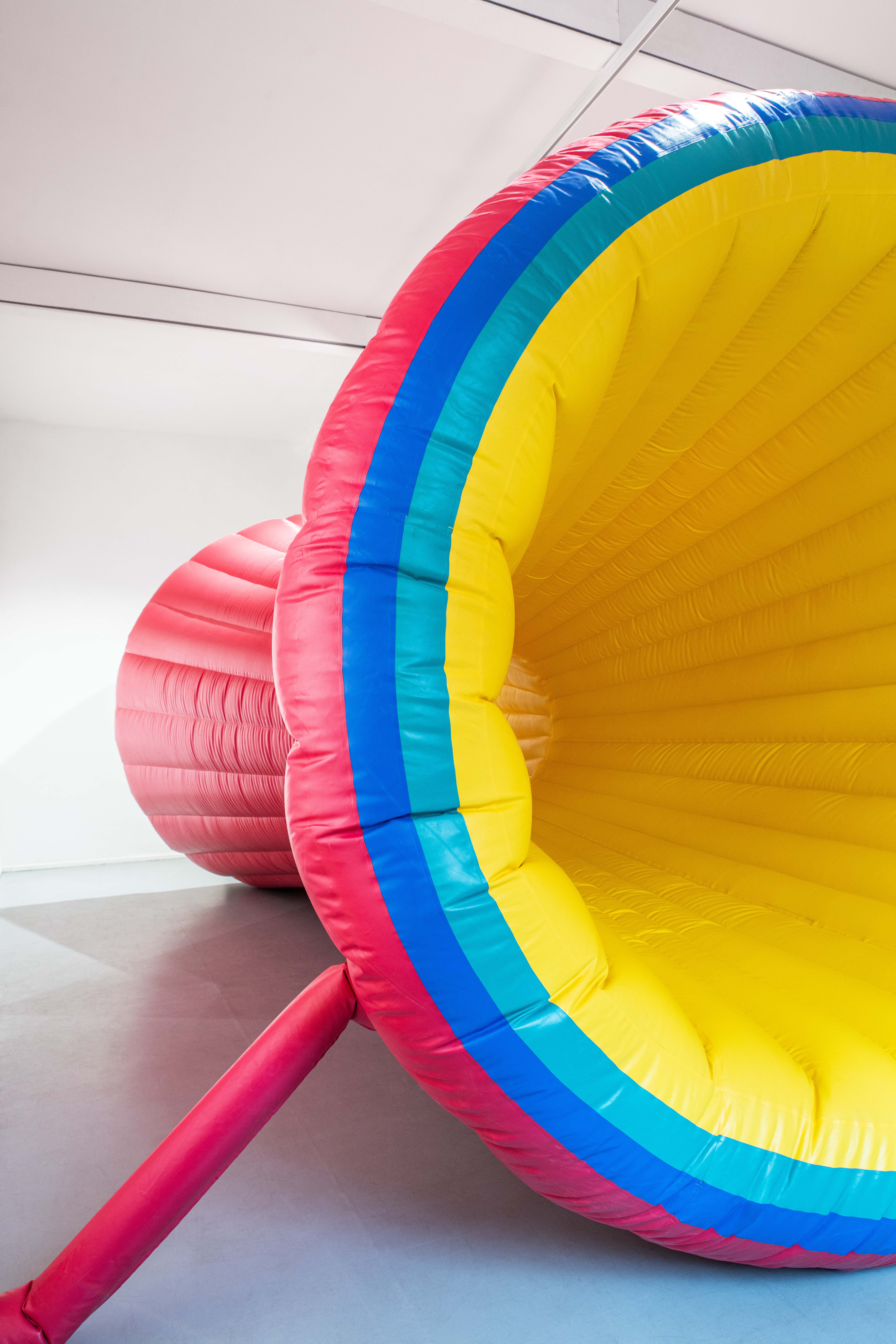
Frappant Galerie, Hamburg
Exhibition: studio lose (Frieder Bohaumilitzky · Ina Römling · Torben Körschkes)
Text: Frieder Bohaumilitzky
Flyer: HEFT Kollektiv (Ina Römling · Torben Körschkes)
Photos: Maik Gräf
Funded by the Freie und Hansestadt Hamburg, ministry of culture and media.
Exhibition: studio lose (Frieder Bohaumilitzky · Ina Römling · Torben Körschkes)
Text: Frieder Bohaumilitzky
Flyer: HEFT Kollektiv (Ina Römling · Torben Körschkes)
Photos: Maik Gräf
Funded by the Freie und Hansestadt Hamburg, ministry of culture and media.

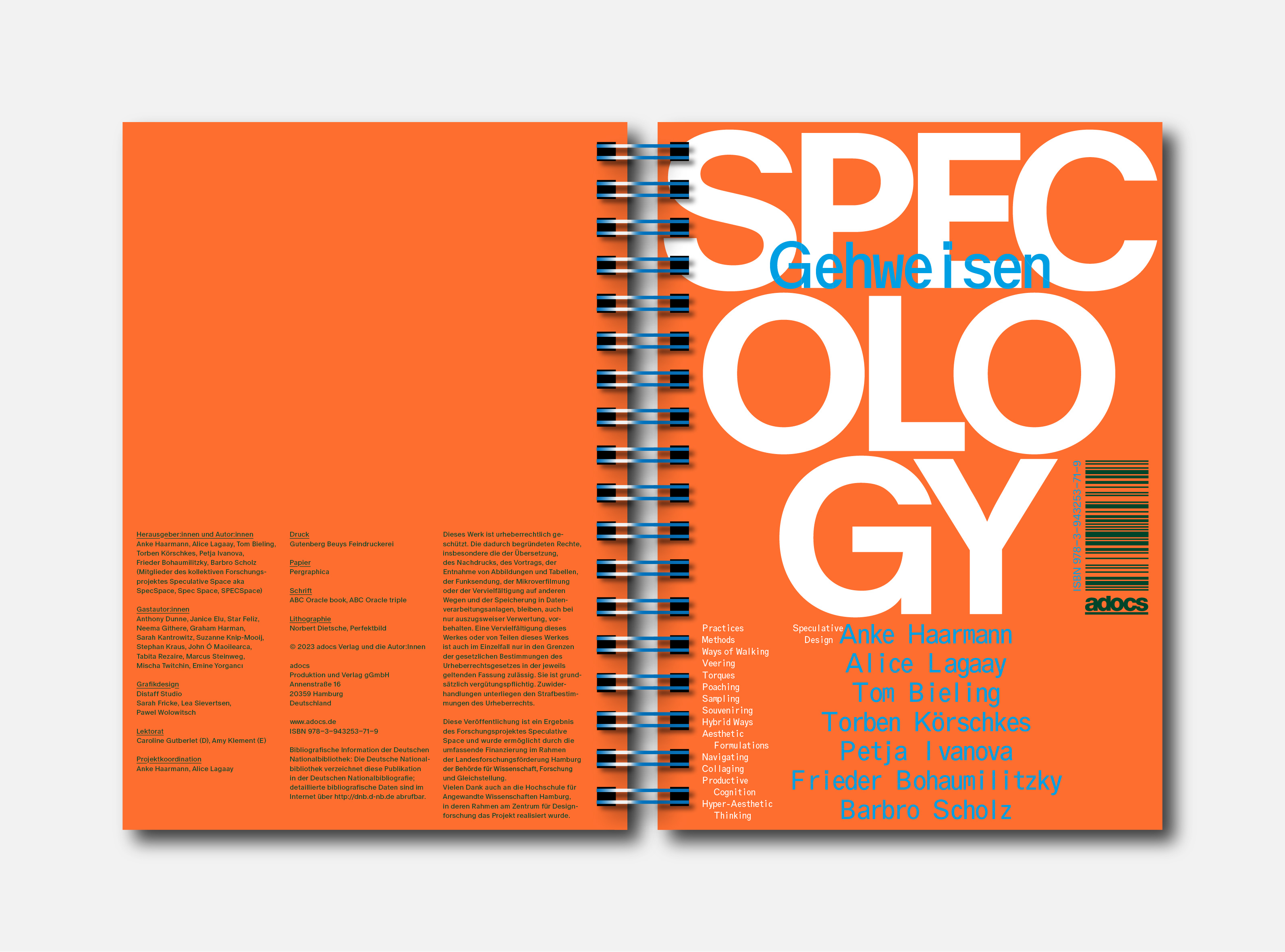
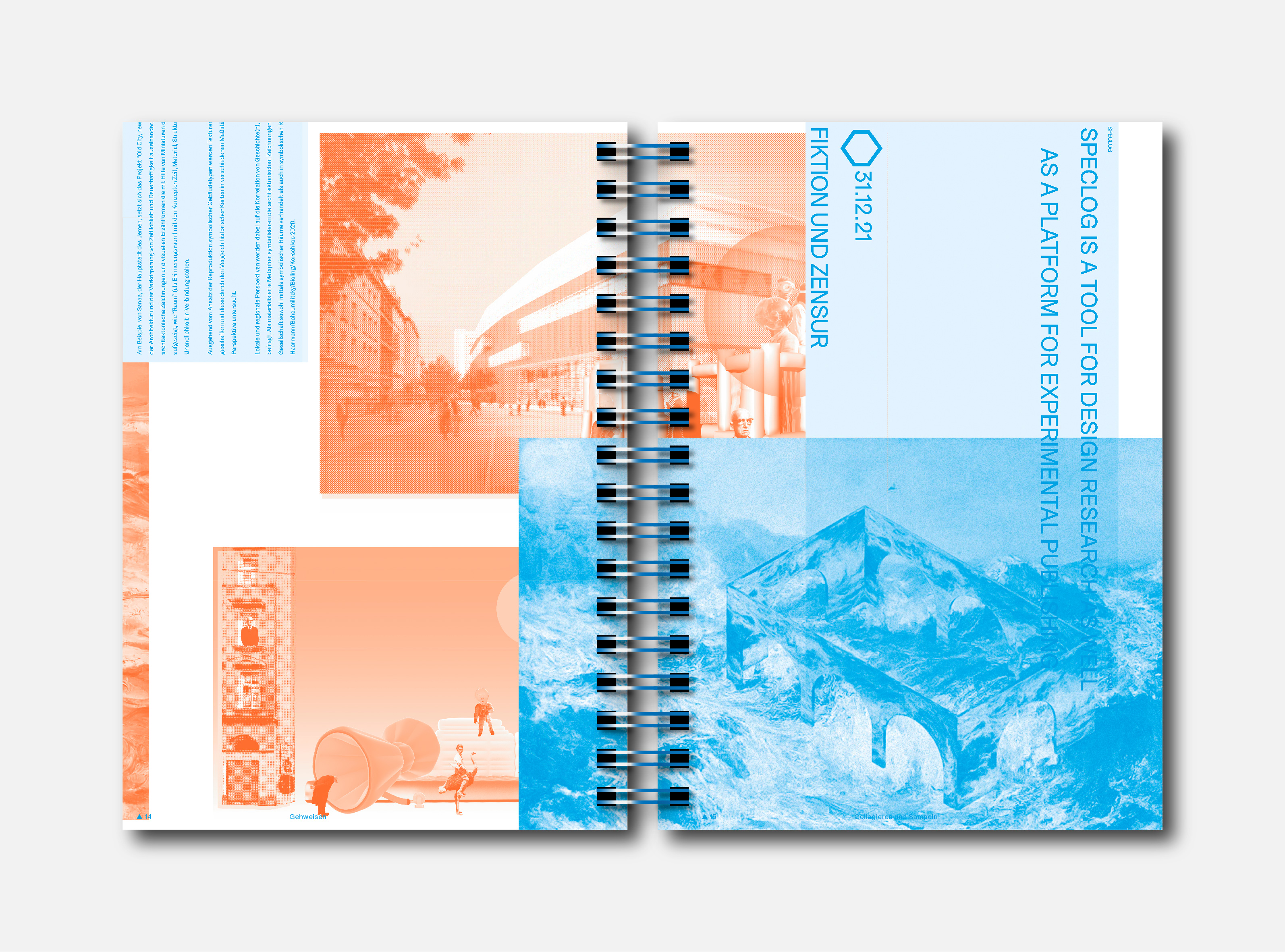

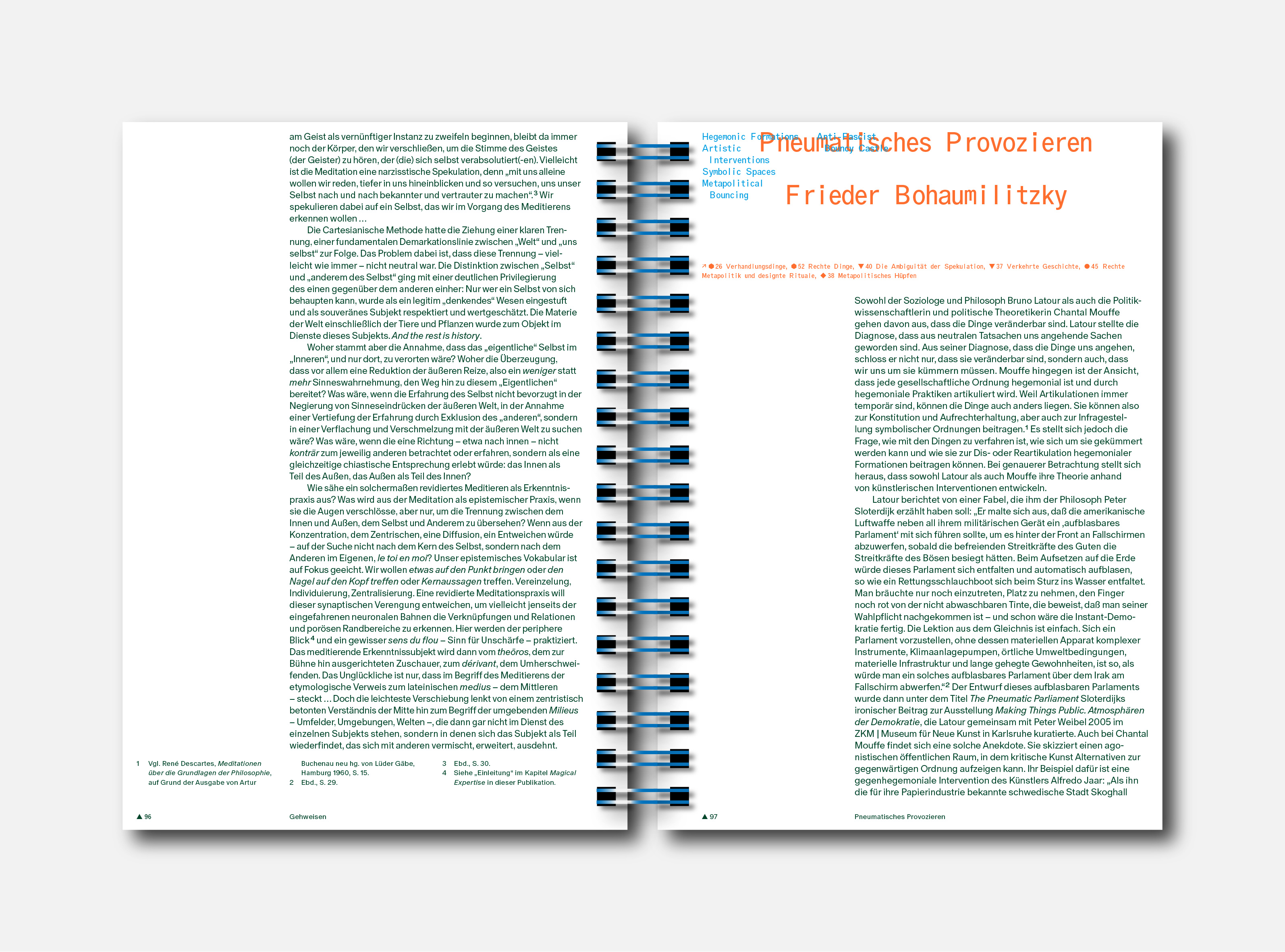

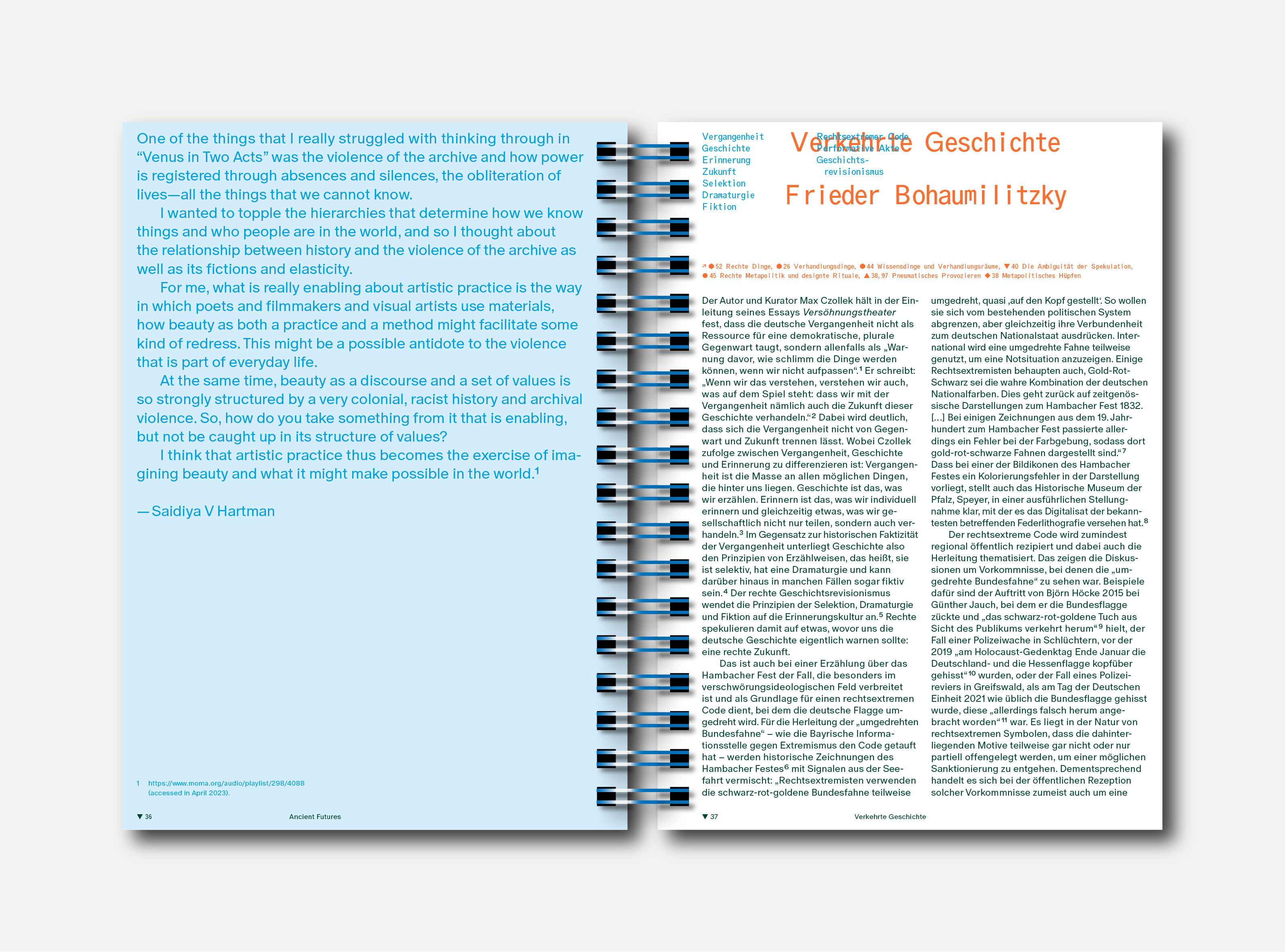
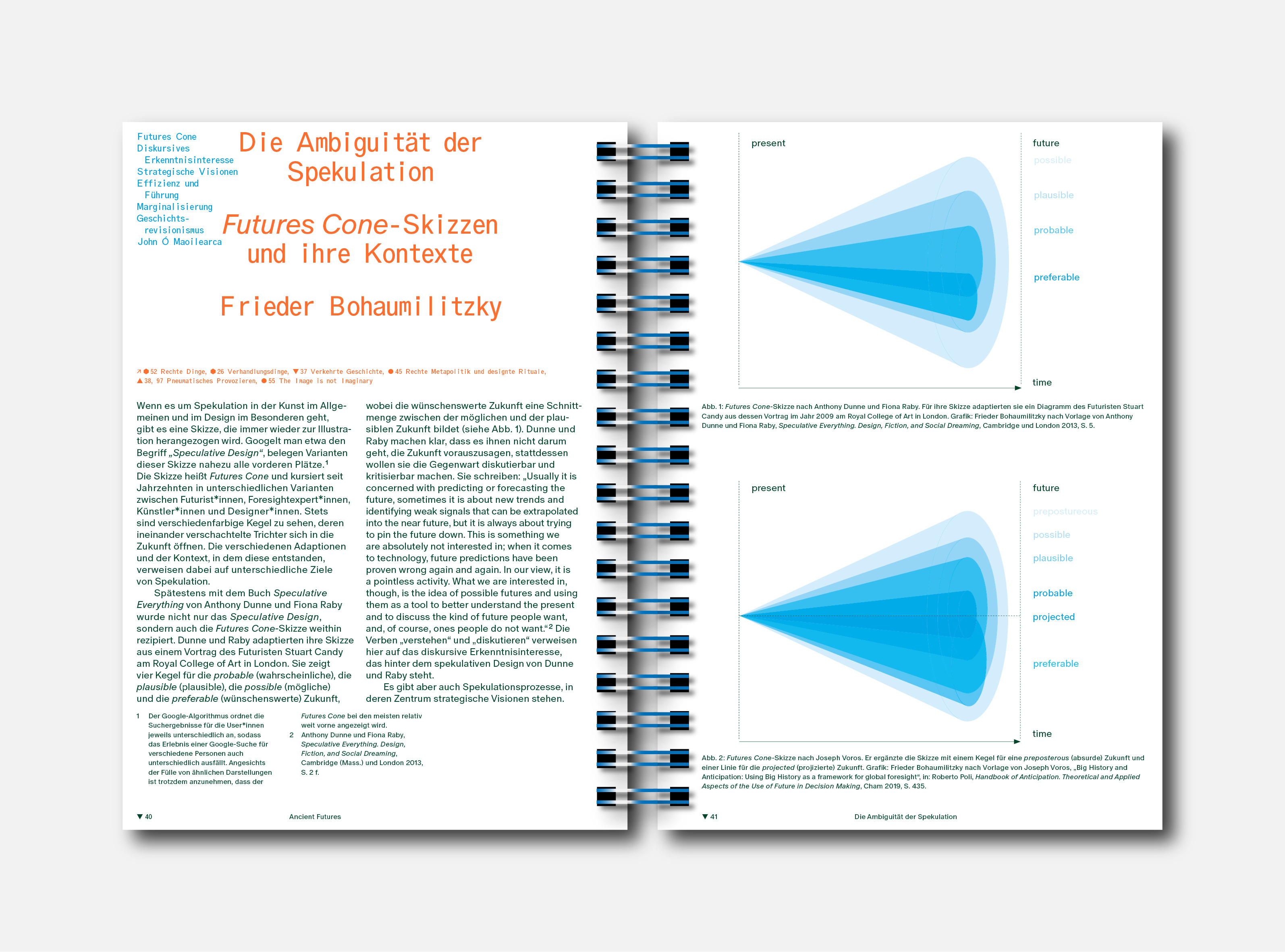
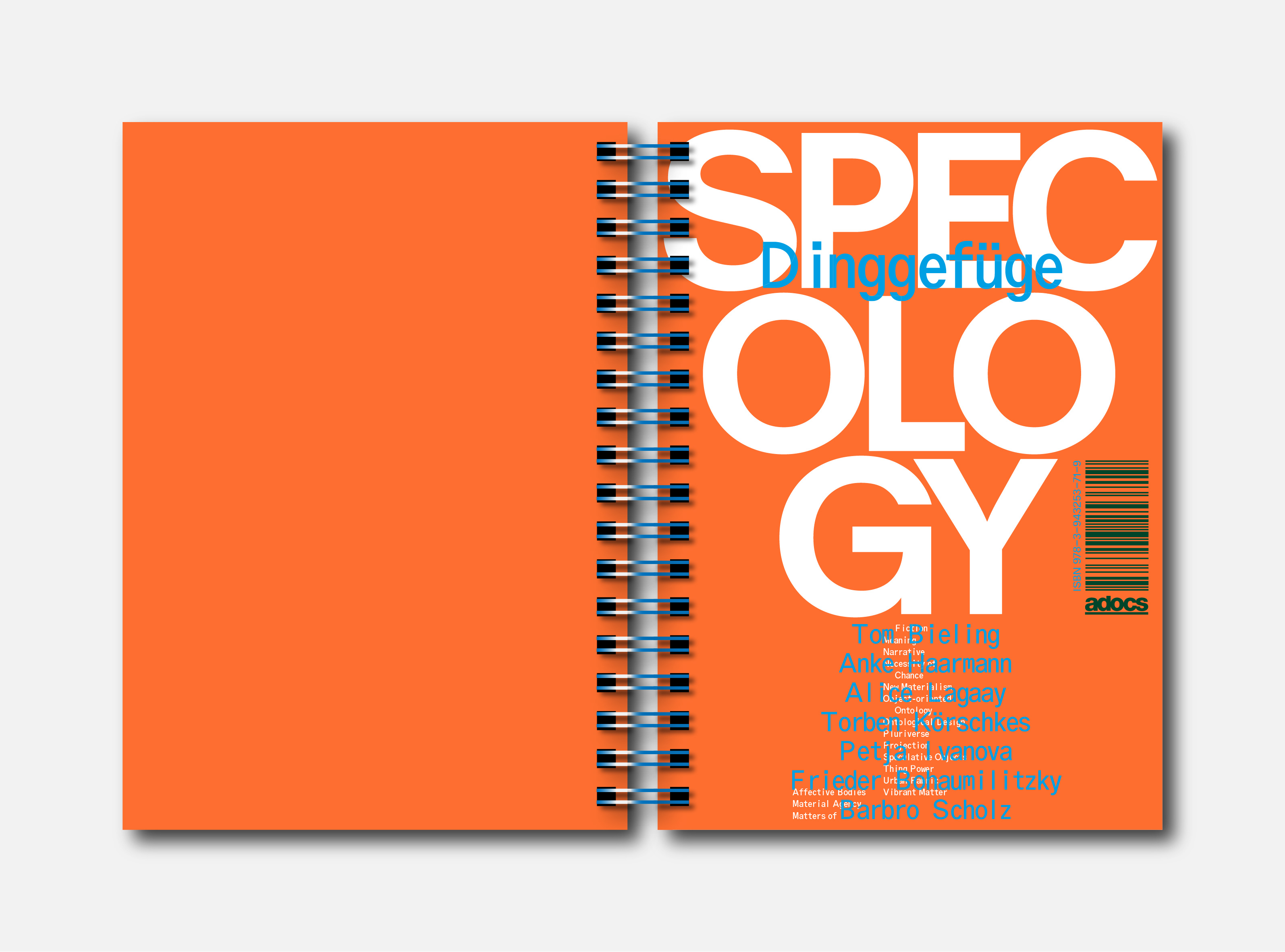



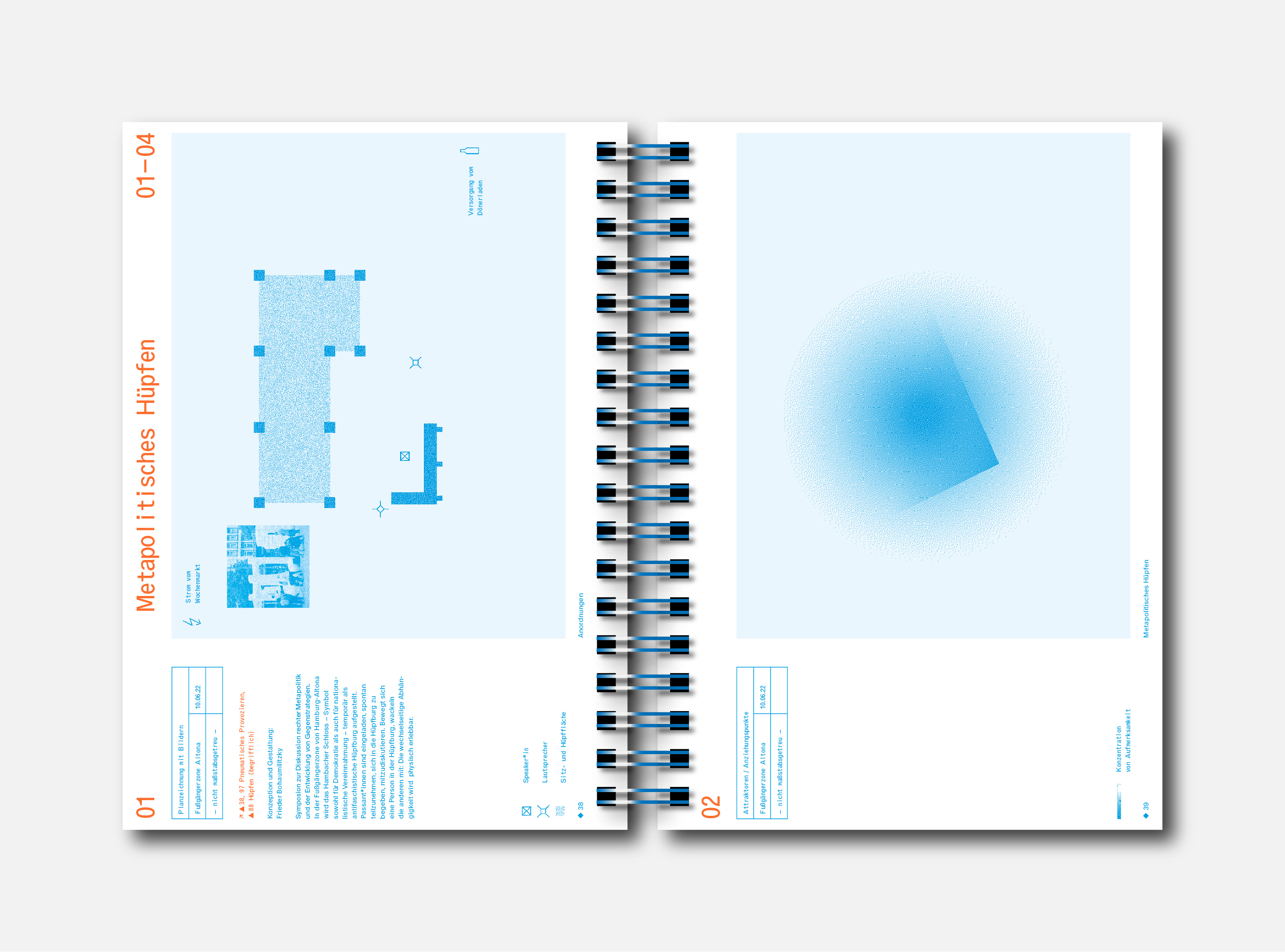
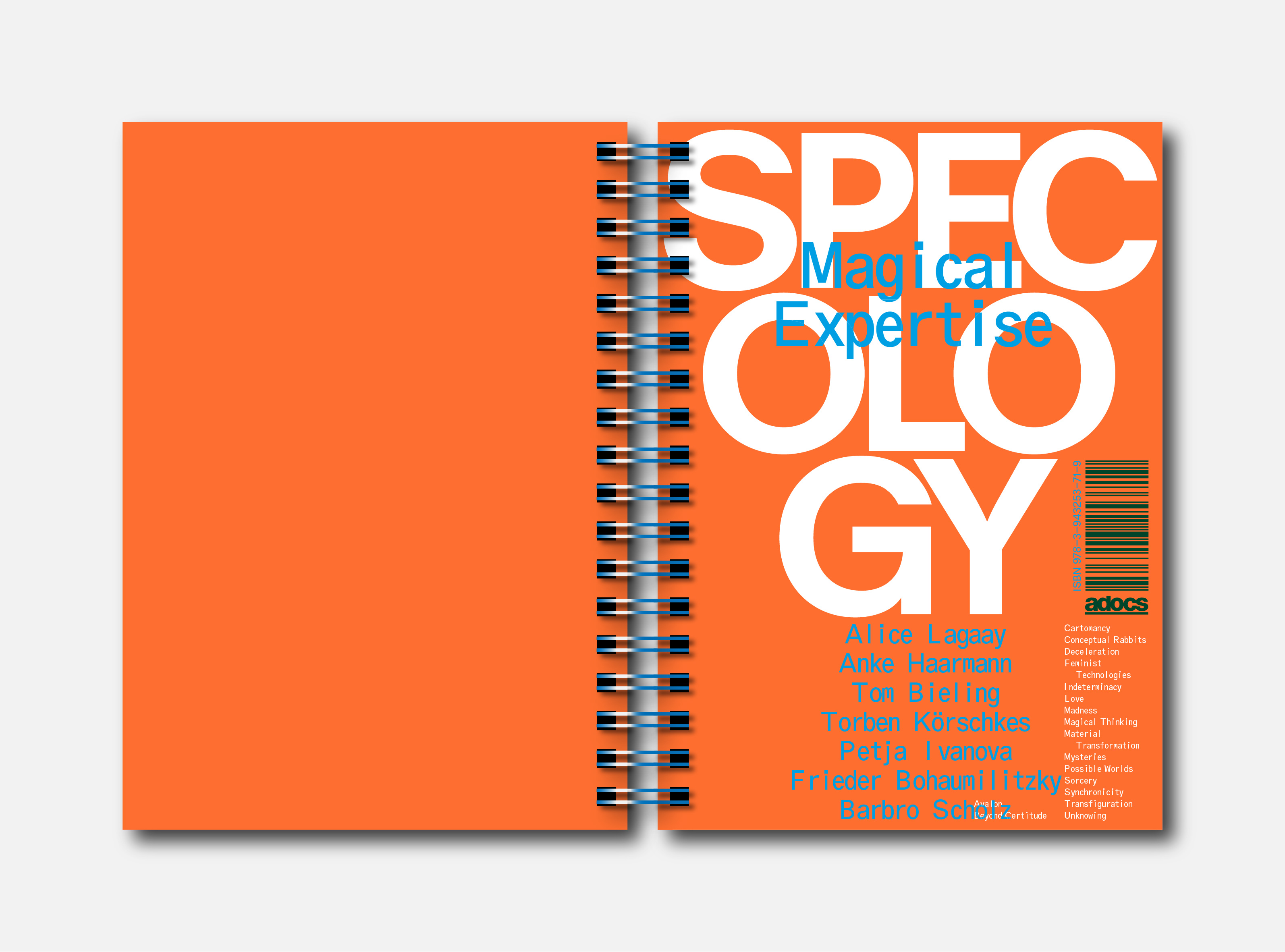

Der Begriff der Spekulation ist erst vor kurzem im Feld ästhetischer Praxis aufgetaucht. Er entfaltet aber eine bemerkenswerte Wirkung und löst eine neue Form der gestalterischen, künstlerischen, provokativen, experimentellen Produktion und ästhetischen Forschung aus. Es entwickelt sich ein neues Verständnis von kollektiver, risikobereiter, hybrider Praxis. Diese Entwicklung führt zur Specology.
Mit der Specology als einer neuen ästhetischen Wissenschaft können wir uns auf ein ebenso imaginäres wie produktives Tableau begeben, auf dem sich erkennende und gestaltende Praktiken und Methoden (Gehweisen), Einsichtsformen (Anordnungen) sowie Medien und Materialien (Dinggefüge), chronopolitische Forschungsfelder (Ancient Futures) und Geisteshaltungen (Magical Expertise) tummeln.
Ziel dieses Buches ist es, die Potenziale und Herausforderungen von und für spekulative-ästhetische Forschung zu erfassen und diskursfähig zu machen – nicht nur auf einer begrifflichen Ebene, sondern auf vielen Ebenen ästhetischer und kritischer Praxis. Die Publikation greift den seit Mitte der 2000er geführten Diskurs um spekulatives Design auf, nähert sich diesem kritisch und liefert Anknüpfungspunkte für Wissens- und Denkpraktiken verschiedener künstlerischer, gestalterischer, philosophischer, kulturtheoretischer oder auch gänzlich außerakademischer Felder.
Die Publikation wurde im Speculative Space entwickelt, kuratiert, verantwortet, zusammengestellt, herausgegeben, durchgearbeitet, geformt von den Forschungskompliz:innen Haarmann, Lagaay, Bieling, Körschkes, Ivanova, Bohaumilitzky, Scholz in Kollaboration mit den Grafikdesignerinnen von distaff studio und in Zusammenarbeit mit Stephan Kraus vertont.
SpecSpace: Anke Haarmann · Alice Lagaay · Tom Bieling · Torben Körschkes · Petja Ivanova · Frieder Bohaumilitzky · Barbro Scholz (Hg.), Specology. Zu einer ästhetischen Forschung, Adocs, Hamburg 2023.
ISBN: 9783943253719
420 Seiten
Grafik Design: Distaff Studio
Vertonung: Stephan Kraus
ISBN: 9783943253719
420 Seiten
Grafik Design: Distaff Studio
Vertonung: Stephan Kraus
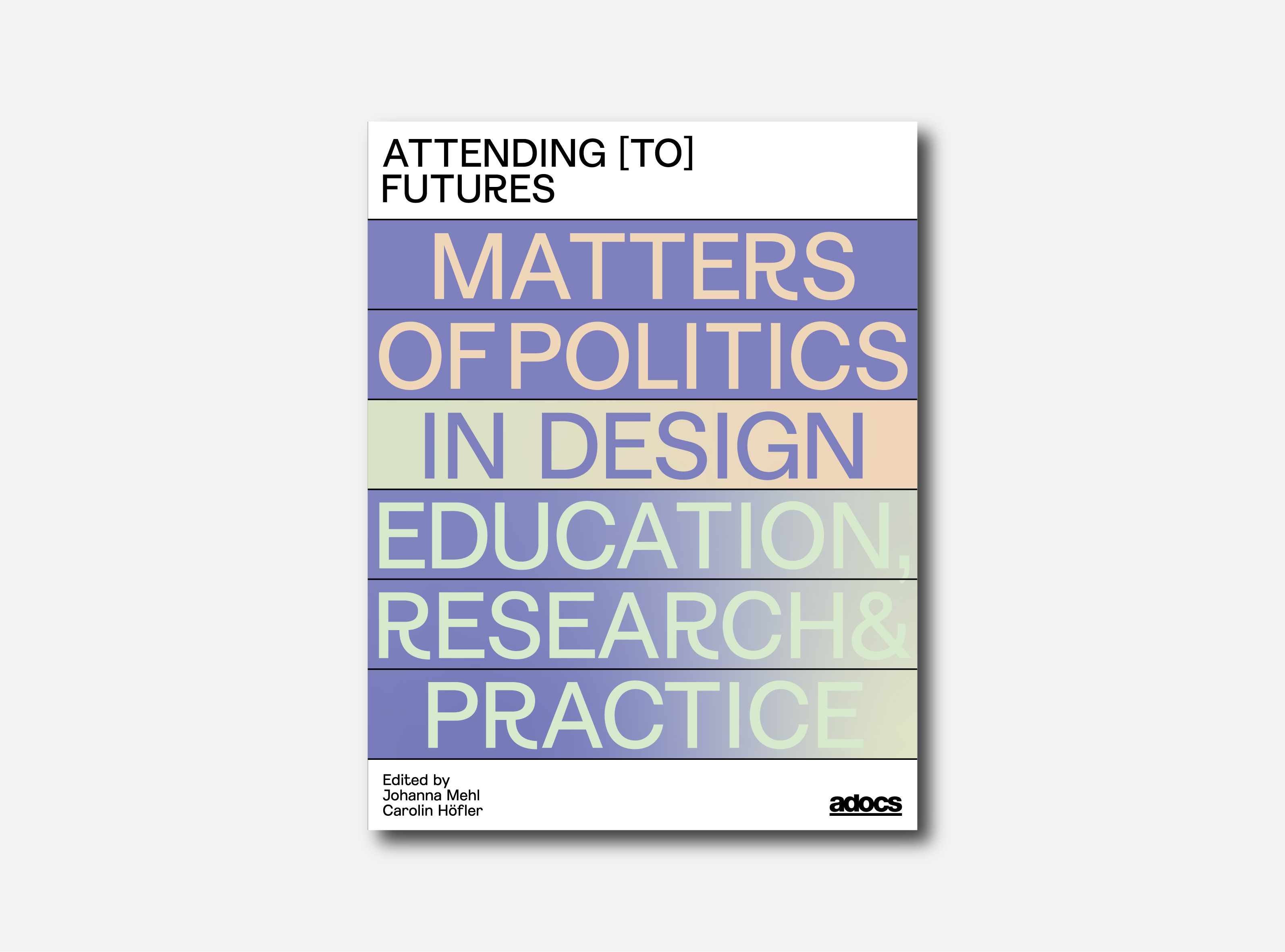
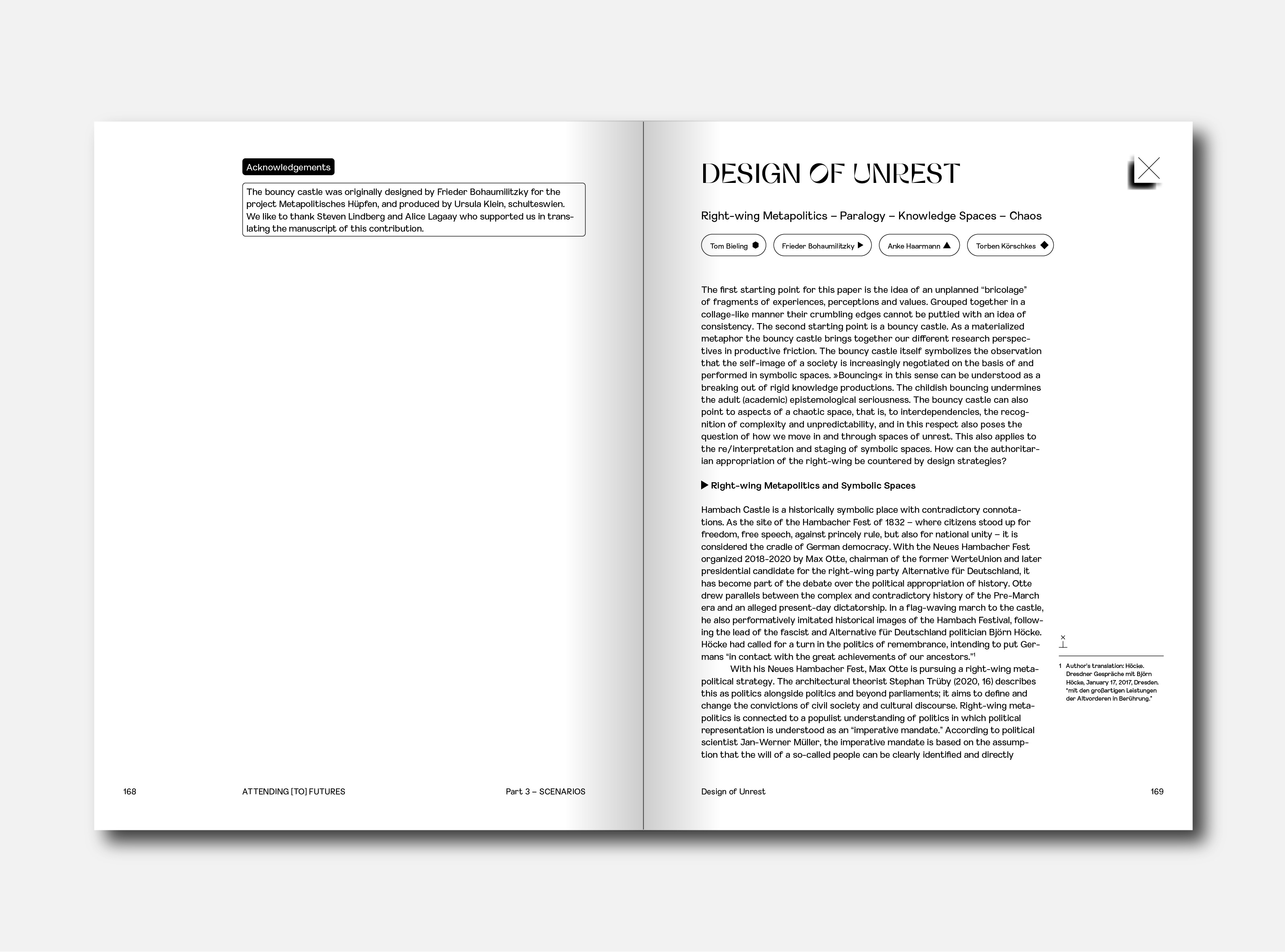
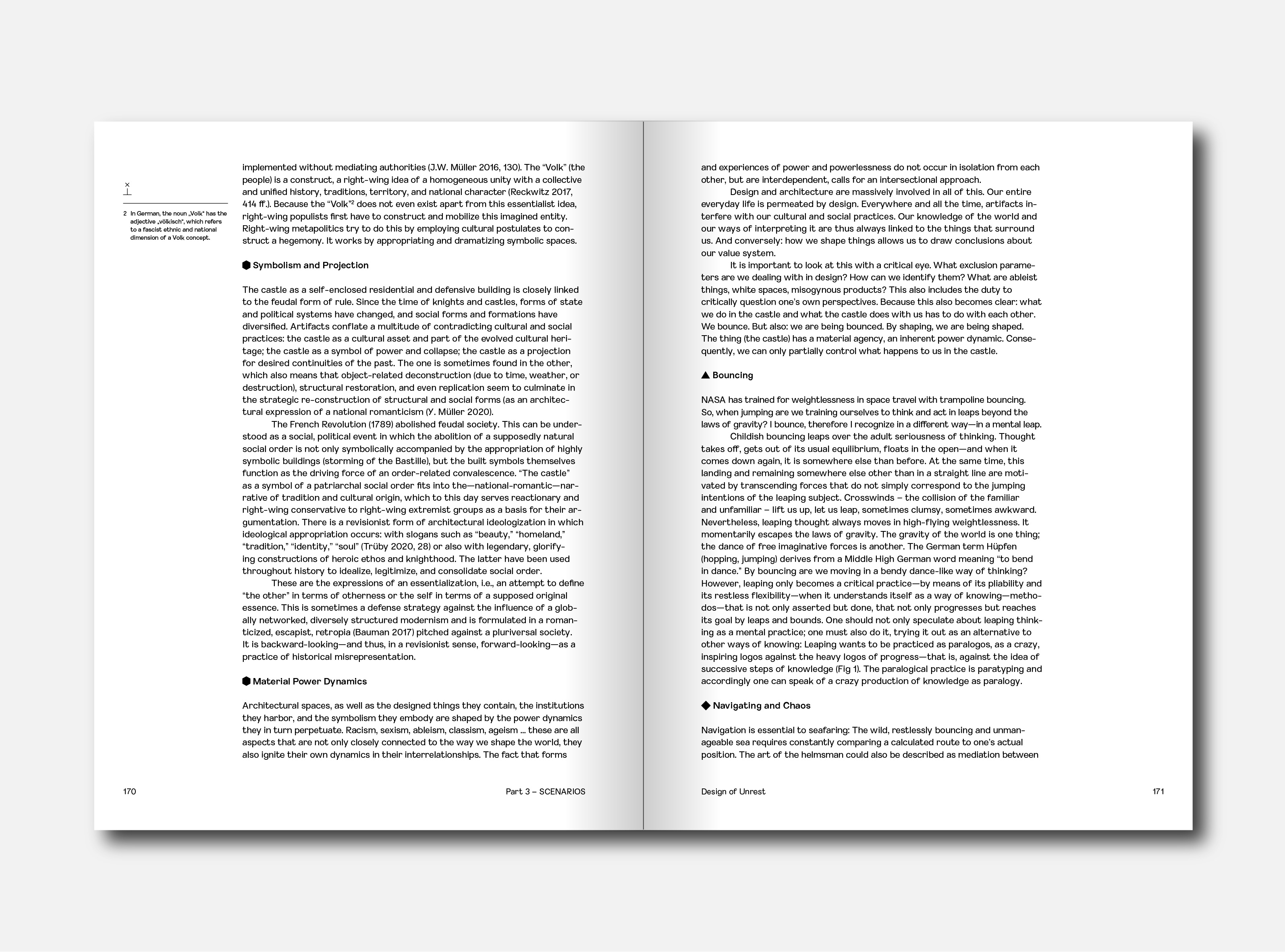
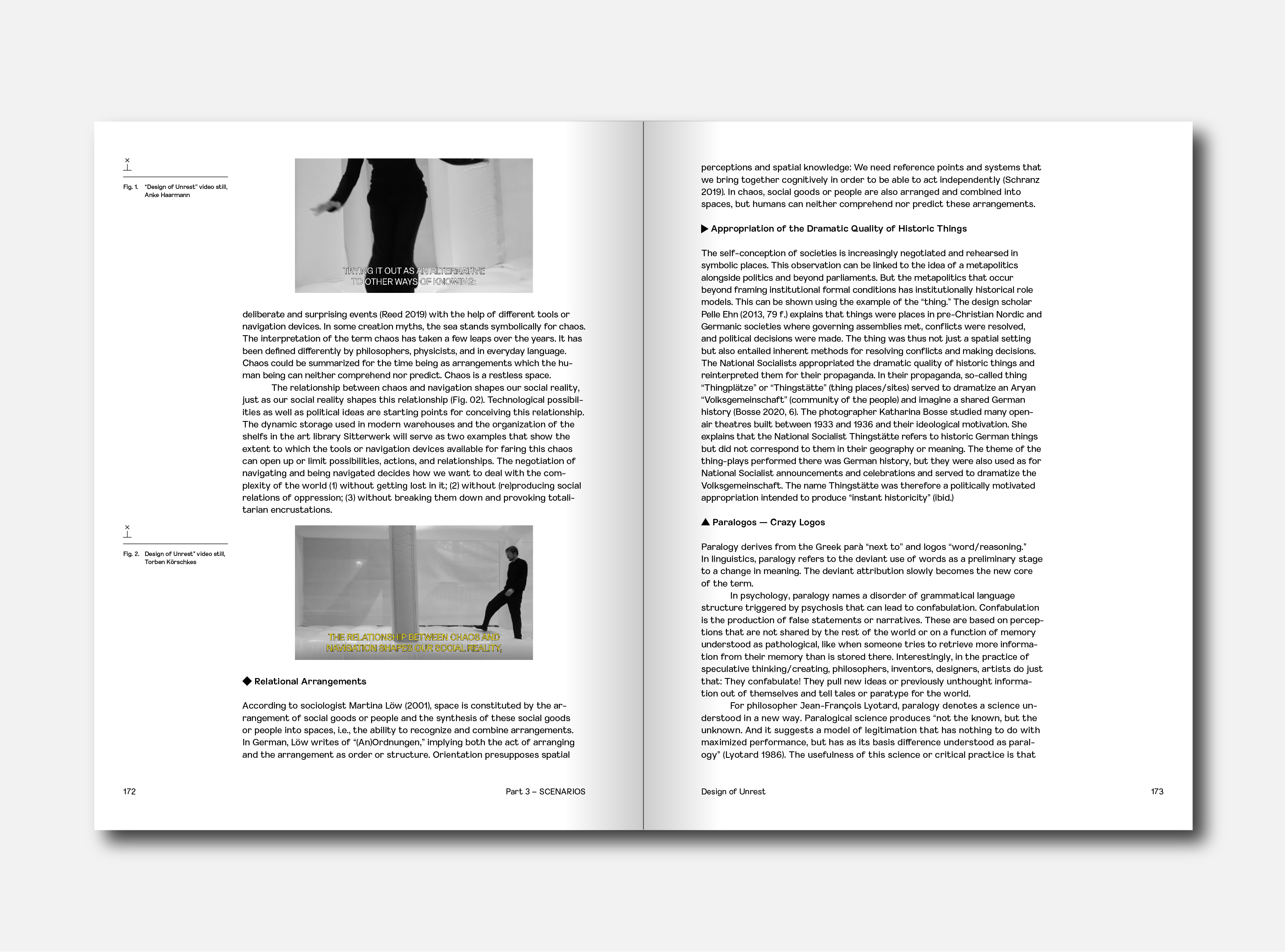
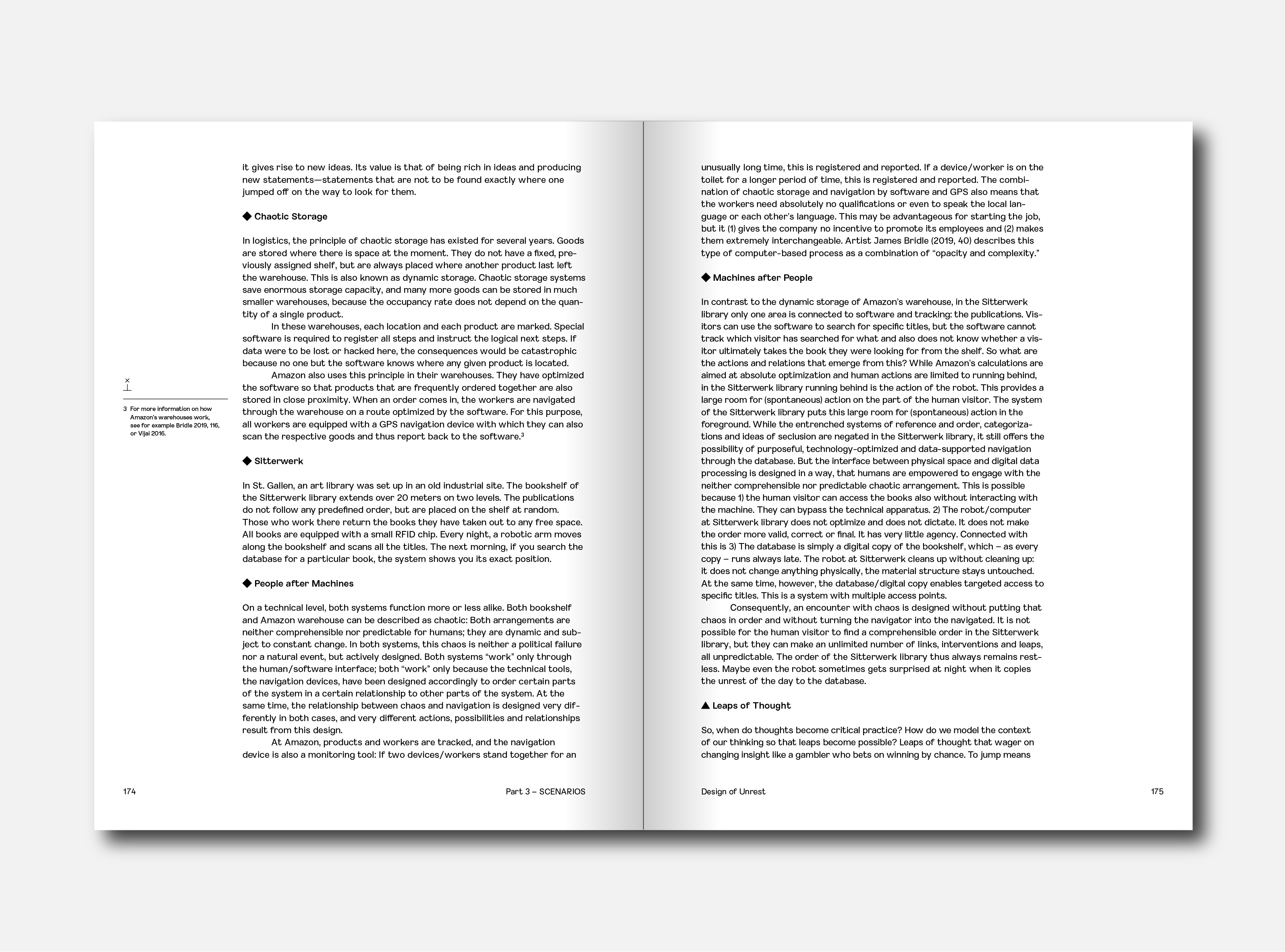
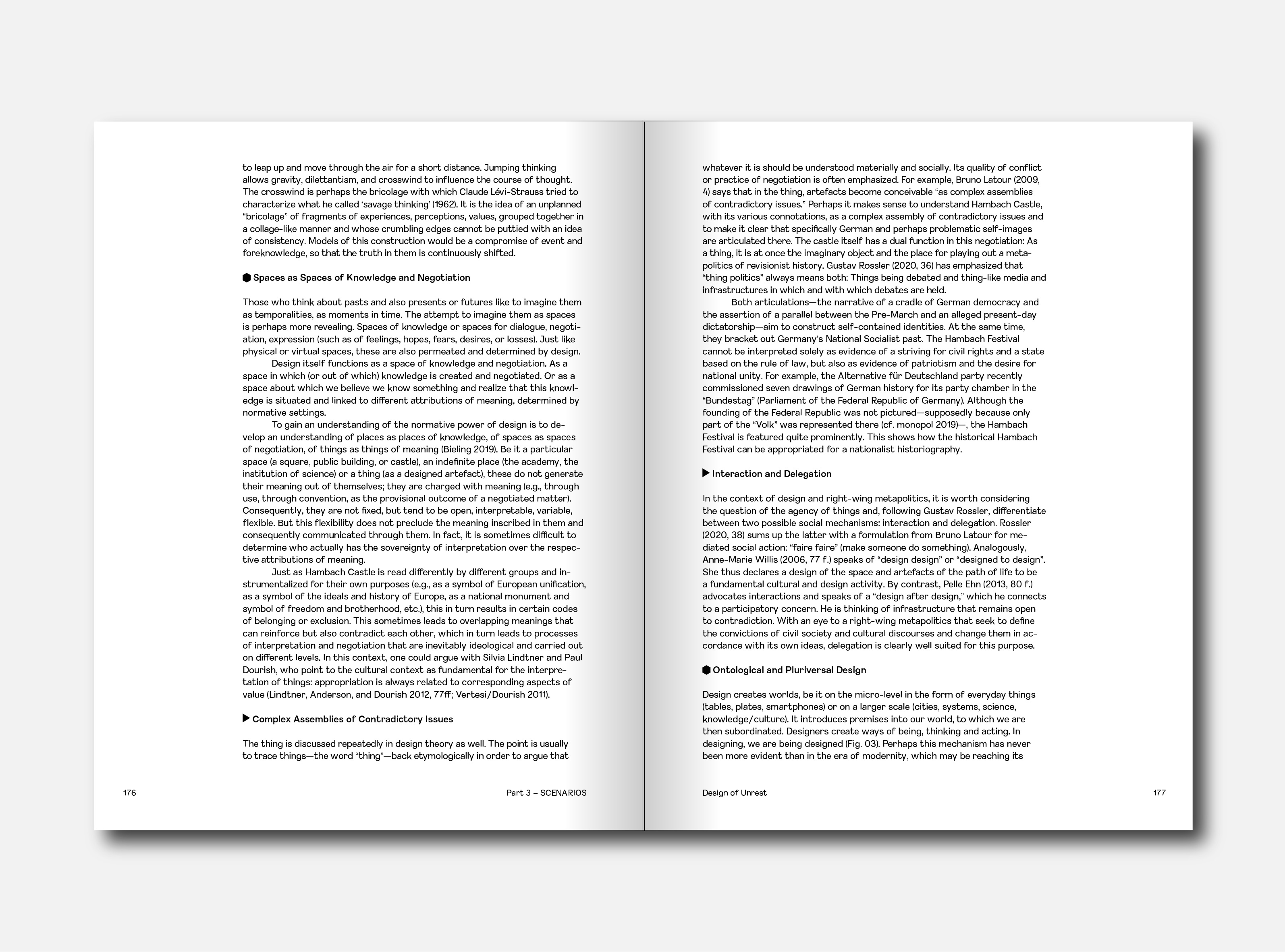


“The first starting point for this paper is the idea of an unplanned “bricolage of fragments of experiences, perceptions and values. Grouped together in a collage-like manner their crumbling edges cannot be puttied with an idea of consistency. The second starting point is a bouncy castle. As a materialized metaphor the bouncy castle brings together our different research perspec- tives in productive friction. The bouncy castle itself symbolizes the observation that the self-image of a society is increasingly negotiated on the basis of and performed in symbolic spaces. “Bouncing” in this sense can be understood as a breaking out of rigid knowledge productions. The childish bouncing undermines the adult (academic) epistemological seriousness. The bouncy castle can also point to aspects of a chaotic space, that is, to interdependencies, the recognition of complexity and unpredictability, and in this respect also poses the question of how we move in and through spaces of unrest. This also applies to the re/interpretation and staging of symbolic spaces. How can the authoritarian appropriation of the right-wing be countered by design strategies?”
Tom Bieling · Frieder Bohaumilitzky · Anke Haarmann · Torben Körschkes, “Design of Unrest. Right-wing Metapolitics – Paralogy – Knowledge Spaces – Chaos”, in: Johanna Mehl · Carolin Höfler, Attending [to] Futures. Matters of Politics in Design Education, Research, Practice, Adocs, Hamburg 2023, S. 168-181.
→ PDF (eng)
→ PDF (eng)

„Unter dem Pflaster liegt der Strand“ is the title of the collaborative installation by Frieder Bohaumilitzky and Ursula Klein on the occasion of the Vienna Design Week. The title is an adaptation of the well-known saying of the 68 movement and in this context refers to the political relevance of design projects in public space.
The contribution was part of the dialogic format of Passionswege, in which international design creators are brought together with Viennese craft businesses. Ursula Klein is the third generation of her family to run the plastic processing company schulteswien, which produces inflatable one-offs for artists and museums.
In their collaboration, Bohaumilitzky and Klein combined their passion for inflatable objects with their interest in political content. They used an space-filling inflatable ensemble to occupy a vacant lot between buildings in Vienna's 6th district.
During the day, the installation invited visitors to gather and hang out; in the evening, it became a space for discourse. In a series of open talks on the installation and in the adjacent workshop of schulteswien, the two discussed the potential of design in the face of current political challenges. The individual narrative elements of the installation served as starting points for the discussions with architects, filmmakers, historians, artists, politicians and political scientists.
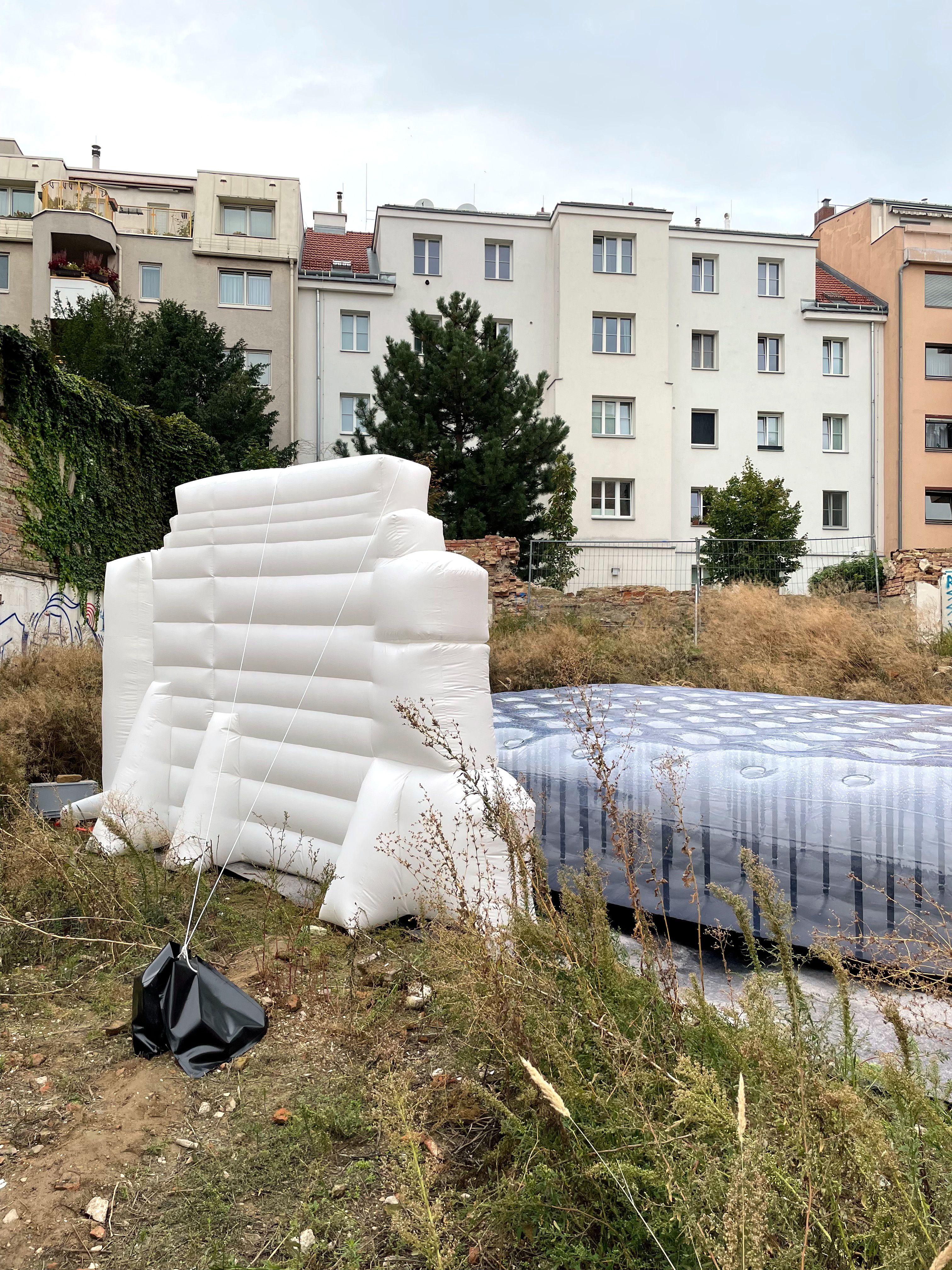
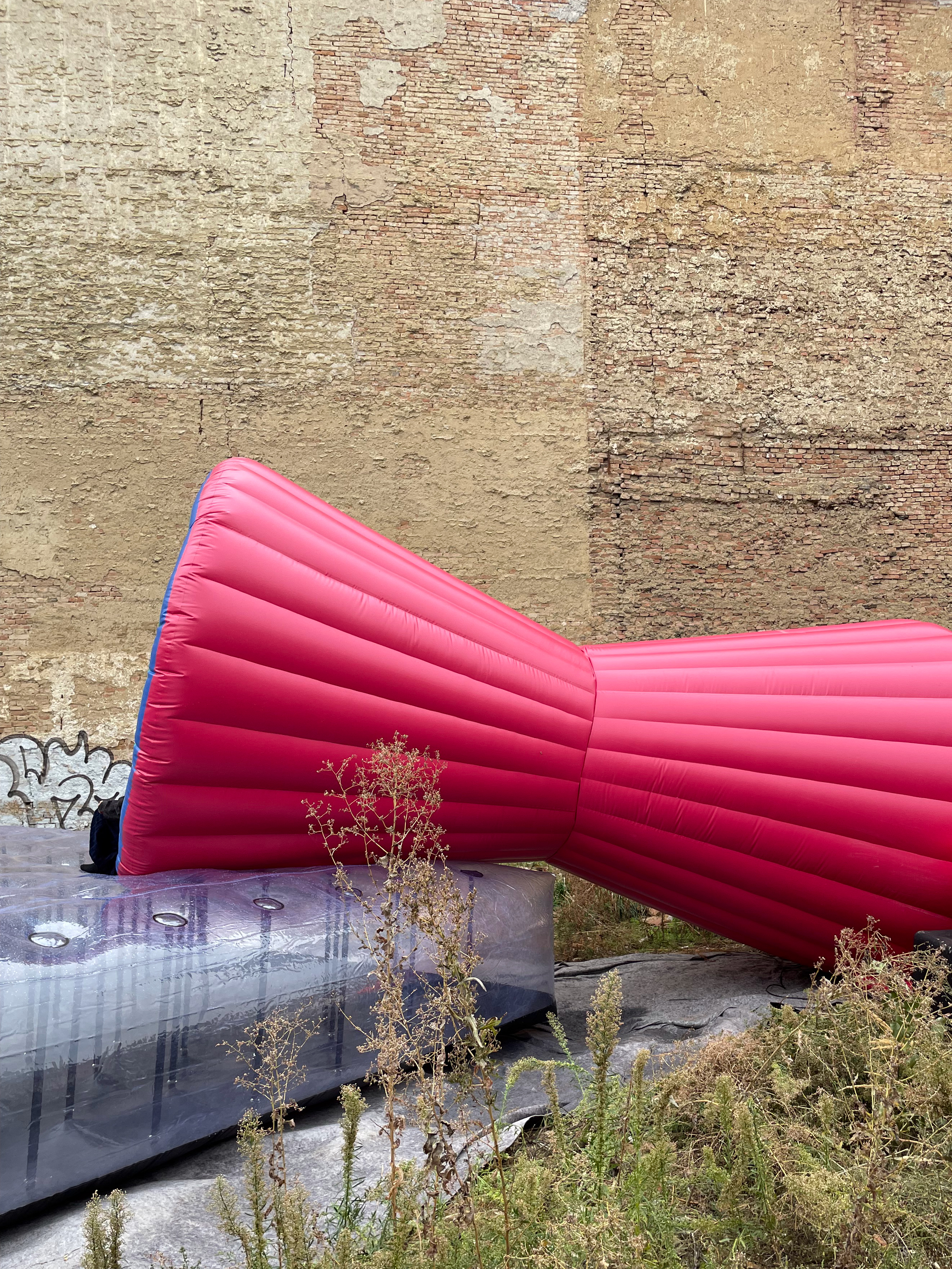
Passionswege, Vienna Design Week
Concept: Frieder Bohaumilitzky · Ursula Klein / schulteswien
Curated by: Nadja Zerunian · Gabriel Roland
Setdesign: Frieder Bohaumilitzky · Ursula Klein / schulteswien
Production: Ursula Klein / schulteswien
→ Detailed program
Concept: Frieder Bohaumilitzky · Ursula Klein / schulteswien
Curated by: Nadja Zerunian · Gabriel Roland
Setdesign: Frieder Bohaumilitzky · Ursula Klein / schulteswien
Production: Ursula Klein / schulteswien
→ Detailed program

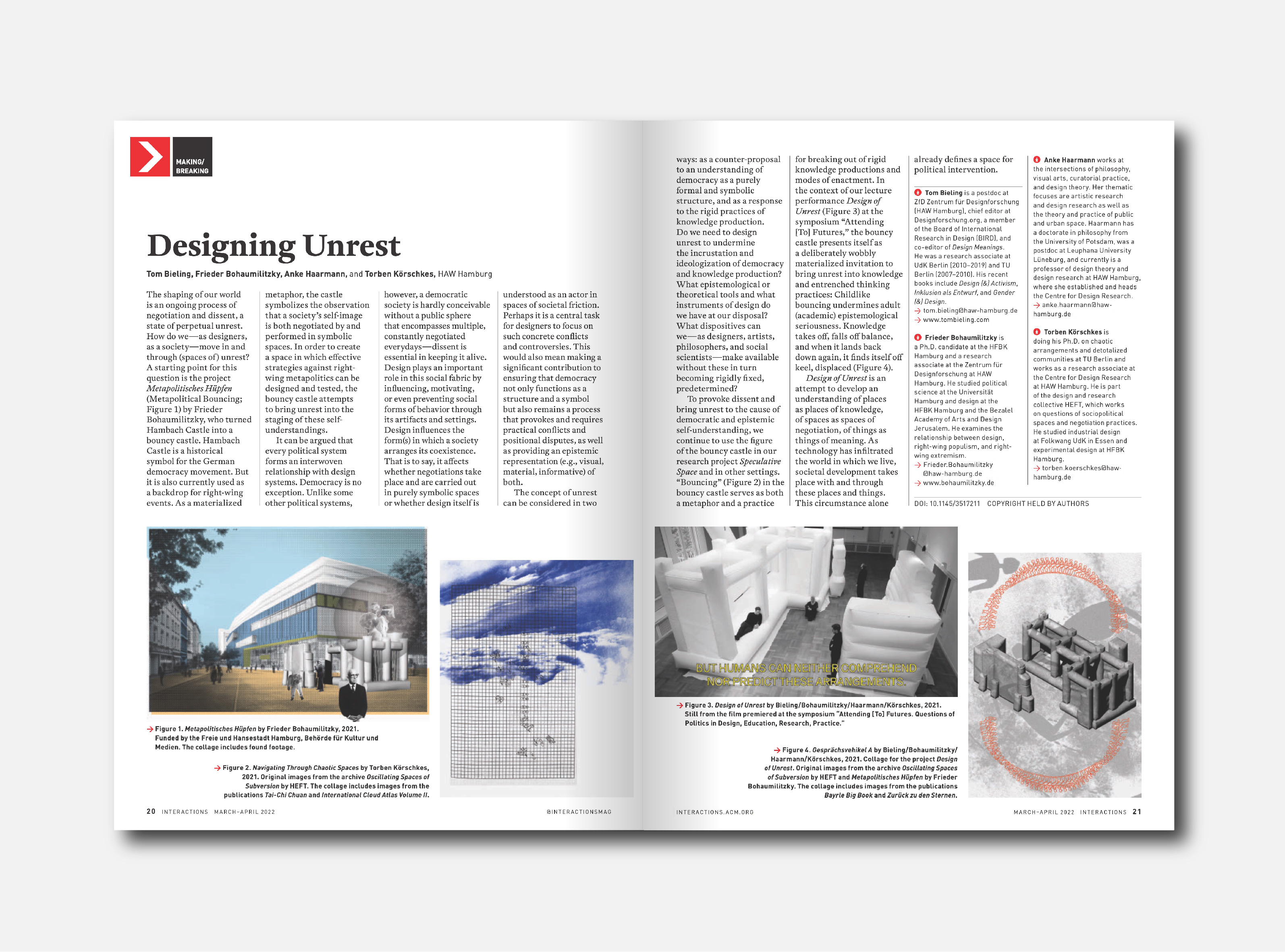
“It can be argued that every political system forms an interwoven relationship with design systems. Democracy is no exception. Unlike some other political systems, however, a democratic society is hardly conceivable without a public sphere that encompasses multiple, constantly negotiated everydays—dissent is essential in keeping it alive. Design plays an important role in this social fabric by influencing, motivating, or even preventing social forms of behavior through its artifacts and settings. Design influences the form(s) in which a society arranges its coexistence. That is to say, it affects whether negotiations take place and are carried out in purely symbolic spaces or whether design itself is understood as an actor in spaces of societal friction. Perhaps it is a central task for designers to focus on such concrete conflicts and controversies. This would also mean making a significant contribution to ensuring that democracy not only functions as a structure and a symbol but also remains a process that provokes and requires practical conflicts and positional disputes, as well as providing an epistemic representation (e.g., visual, material, informative) of both.”
Tom Bieling · Frieder Bohaumilitzky · Anke Haarmann · Torben Körschkes, “Designing Unrest”, in: Interactions, Volume 29, Issue 2, New York, Association for Computing Machinery 2022, p. 20-21.
Text: Tom Bieling · Frieder Bohaumilitzky · Anke Haarmann · Torben Körschkes
Images: Frieder Bohaumilitzky · Torben Körschkes
DOI: https://doi.org/10.1145/3517211
Text: Tom Bieling · Frieder Bohaumilitzky · Anke Haarmann · Torben Körschkes
Images: Frieder Bohaumilitzky · Torben Körschkes
DOI: https://doi.org/10.1145/3517211